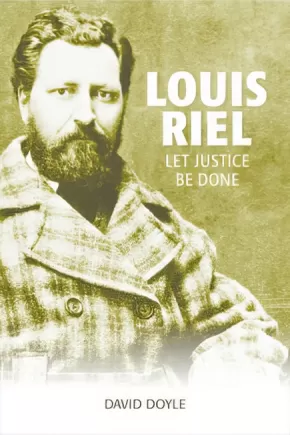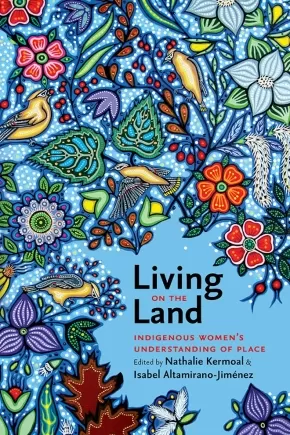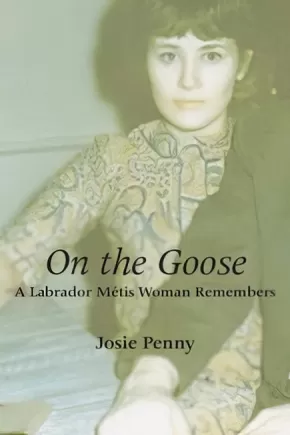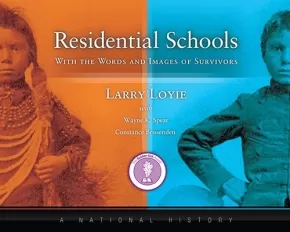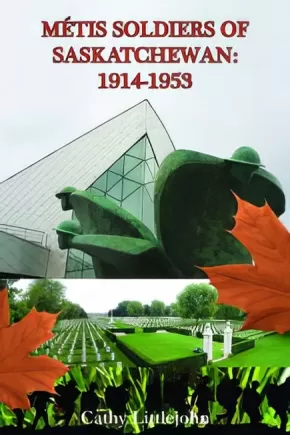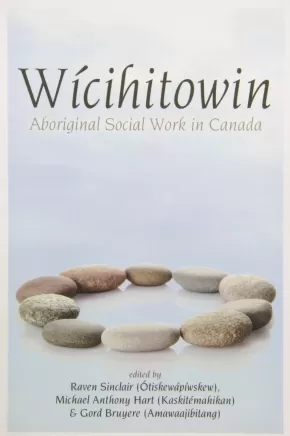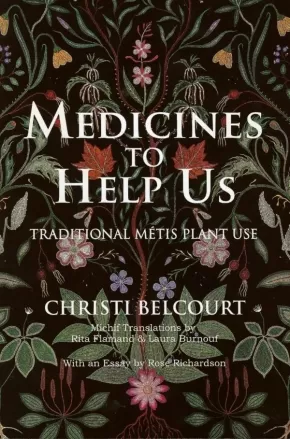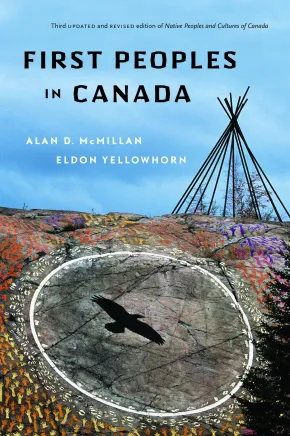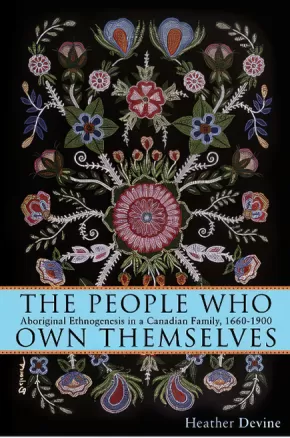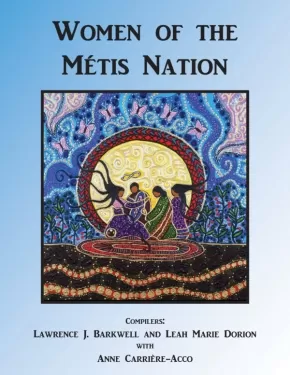
Métis
91
-
104
of
104 Results;
Sort By
Go To
of 7
Louis Riel: Let Justice Be Done
$24.95
Format:
Paperback
Text Content Territories:
Indigenous Canadian; Métis;
Grade Levels: University/College;
ISBN / Barcode: 9781553804963
Synopsis:
Synopsis:
Louis Riel, prophet of the new world and founder of the Canadian province of Manitoba, has challenged Canadian politics, history and religion since the early years of Confederation. In Canada's most important and controversial state trial, Riel was found guilty of "high treason," sentenced to hang and executed on November 16, 1885. With 2017 being Canada's sesquicentennial of the initial Confederation of four British colonies, and with the question of reconciliation on the minds of many, the celebrations must recognize that the brutal execution of Louis Riel remains Canada's "great divide." Was the 1885 execution of Riel the hanging of a traitor? Or the legal murder of a patriot and statesman? Tried in a territorial court, Riel called out for justice, for an "inquiry into his career." To date, no such inquiry has been called. The spiritual and political father of the Métis nation and Western Canada remains branded a traitor to Canada.
In this imaginative re-enactment of his trial, Riel is finally given the opportunity to respond to his conviction for treason, offering his side of the story at Batoche and Red River.
Reviews
“In this era of reconciliation, Louis Riel: Let Justice Be Done is a tour de force. Exposing the combined pillars of racism and colonialism, Doyle assists in the decolonization of Canadian history during her sesquicentennial commemorations and celebrations.” — Venerable Dr. John A. (Ian) MacKenzie
“David Doyle’s advocacy, both in his writings and presentations, appropriates nothing from the Métis or their culture, rather it supplements it both for them and for all Canadians.” — George & Terry Goulet, authors of The Trial of Louis Riel
Additional Information
200 pages | 9.00" x 6.00" | 16 b&w photos
This book is creative nonfiction, a genre of writing that presents factually accurate narratives using literary style and technique (creativity).
Living on the Land: Indigenous Women's Understanding of Place
$27.99
Format:
Paperback
Text Content Territories:
Indigenous Canadian; Métis; First Nations; Indigenous;
Reading Level: N/A
ISBN / Barcode: 9781771990417
Synopsis:
Synopsis:
An extensive body of literature on Indigenous knowledge and ways of knowing has been written since the 1980s. This research has for the most part been conducted by scholars operating within Western epistemological frameworks that tend not only to deny the subjectivity of knowledge but also to privilege masculine authority. As a result, the information gathered predominantly reflects the types of knowledge traditionally held by men, yielding a perspective that is at once gendered and incomplete. Even those academics, communities, and governments interested in consulting with Indigenous peoples for the purposes of planning, monitoring, and managing land use have largely ignored the knowledge traditionally produced, preserved, and transmitted by Indigenous women. While this omission reflects patriarchal assumptions, it may also be the result of the reductionist tendencies of researchers, who have attempted to organize Indigenous knowledge so as to align it with Western scientific categories, and of policy makers, who have sought to deploy such knowledge in the service of external priorities. Such efforts to apply Indigenous knowledge have had the effect of abstracting this knowledge from place as well as from the world view and community—and by extension the gender—to which it is inextricably connected. Living on the Land examines how patriarchy, gender, and colonialism have shaped the experiences of Indigenous women as both knowers and producers of knowledge. From a variety of methodological perspectives, contributors to the volume explore the nature and scope of Indigenous women’s knowledge, its rootedness in relationships both human and spiritual, and its inseparability from land and landscape. From the reconstruction of cultural and ecological heritage by Naskapi women in Québec to the medical expertise of Métis women in western Canada to the mapping and securing of land rights in Nicaragua, Living on the Land focuses on the integral role of women as stewards of the land and governors of the community. Together, these contributions point to a distinctive set of challenges and possibilities for Indigenous women and their communities.
Additional Information
240 pages | 6.00" x 9.00" | Paperback
Let Me See Your Fancy Steps: Story of a Métis Dance Caller
$25.00
Text Content Territories:
Indigenous Canadian; Métis;
ISBN / Barcode: 978-1-926795-83-6
Synopsis:
Synopsis:
“The Gabriel Dumont Institute Press is pleased to be able to preserve and share Jeanne Pelletier’s work and life story through Let Me See Your Fancy Steps—Story of a Métis Dance Caller. The Story of Jeanne Pelletier as told to Sylvie Sara Roy and Wilfred Burton. Jeanne’s achievement as the first female Métis dance caller is, of course, about Métis dance, but it is also about the determination of a young Métis girl who achieves her dream to become a dance caller during a time when this was only done by men.”
This resource includes dance calls for 16 dances and is accompanied by the instructional DVD All My Relations which features dance company V’ni Dansi which is led by renowned dancer and artistic director, Yvonne Chartrand.
Reviews
"The recounting of Jeanne’s work is supplemented throughout the book by testimonials of her former dance students and community members, all of whom praise the dance caller for the substantial impact that she’s had both on their personal lives, as well as the academic and social climates of the Métis community in Saskatchewan. As a Métis myself, I feel lost at times, as if my culture is fuzzy or foreign to me. Reading the life experiences, knowledge, and not to mention the wealth of Métis Jig steps found in this book gave me an overwhelming sense of peace to see research of this caliber and this level of care being invested in my culture. I would highly recommend this book to anyone with an interest in Métis culture and the significance that the jig has to the culture. Anyone who has seen the Métis Jig performed live knows that it is a beautiful and awe-inspiring dance, but after reading Jeanne’s explanations of the cultural significance of the dances, I will now appreciate the dance that much more as a story and celebration of my culture. It is also worth mentioning that entire dance sequences are written out to follow with Jeanne’s notes, and the book includes an instructional DVD." - Ben Charles for SaskBook Reviews
Educator Information
Recommended by Gabriel Dumont Institute for Secondary/Post Secondary/Adult.
Includes a DVD.
Recommended in the Canadian Indigenous Books for Schools 2019-2020 resource list as being useful for grades 5-12 with regard to these subjects: English Language Arts, Physical Education, Social Studies, Teacher Resource.
On the Goose: A Labrador Métis Woman Remembers
$26.99
Format:
Paperback
Text Content Territories:
Indigenous Canadian; Métis;
ISBN / Barcode: 9781459719125
Synopsis:
Synopsis:
Josie Penny's life as part of a loving Métis family in an isolated corner of Labrador changed dramatically when she was taken away to a residential school. Abused by the students, Josie became increasingly angry and isolated from her family and community as she grew into her teens. At seventeen she left for Goose Bay to make her fortune and start her own life.
On the Goose is the story of how Josie came to terms with her feelings of helplessness and isolation as she began to understand why she could not feel or express love. Josie Penny's memoir is an inspiring true story of how love and hard work helped one woman triumph over adversity.
Residential Schools, With the Words and Images of Survivors
$34.95
Format:
Hardcover
Text Content Territories:
Indigenous Canadian;
ISBN / Barcode: 9780993937101
Synopsis:
Synopsis:
Residential Schools, With the Words and Images of Survivors, A National History honours the survivors, the former students, who attended residential schools. Designed for the general reader this accessible, 112-page history offers a first-person perspective of the residential school system in Canada, as it shares the memories of more than 70 survivors from across Canada as well as 125 archival and contemporary images (65 black & white photographs, 51 colour, some never before published).
This essential volume written by award-winning author Larry Loyie (Cree), a survivor of St. Bernard Mission residential school in Grouard, AB, and co-authored by Constance Brissenden and Wayne K. Spear (Mohawk), reflects the ongoing commitment of this team to express the truths about residential school experiences and to honour the survivors whose voices are shared in this book.
Along with the voices, readers will be engaged by the evocative, archival photographs provided by the Shingwauk Residential Schools Centre with the assistance of curator Krista McCracken. The book begins with the moving introduction by Larry Loyie, and moves to seven chapters that explore the purpose of this school system; cultures and traditions; leaving home; life at school the half-day system; the dark side of the schools; friendship and laughter coping with a new life; changing world–the healing begins; and an afterword. A detailed, full colour map showing residential schools, timeline with key dates, glossary, and a helpful index (including names of survivors and schools) make this vital resource a must-have for secondary, college, and universities, libraries, and the general reader.
Reviews
"A broad and comprehensive review of the history of First Nations, Métis, and Inuit peoples in Canada told from the perspective of First Peoples in a very accessible way. Any educator, regardless of personal background or heritage, would find this timely resource very useful in any classroom." — Gary Fenn and Domenic Bellissimo, executive assistants, Ontario Secondary School Teachers’ Federation
"Written with a gentle hand, this book describes a history that few Canadians understand or even know about. From the first page, those in search of the truth are engaged in a journey of learning, as they come to understand the true battle of Aboriginal peoples to preserve their cultures and pride. This story is a true account of resiliency and human spirit." — Tracy Zweifel, executive director, Sagitawa Friendship Society, Alberta
Awards
- 2016 Winner of Golden Oak award in Ontario's Forest of Reading program
Educator Information
This must-have resource includes a detailed, full-colour map showing residential schools, a timeline with key dates, and a glossary.
Recommended for grades 7-12, but would still be useful for adults and college/university courses studying residential schools and Indigenous history.
This book has been evaluated and approved by ERAC (Educational Resource Acquisition Consortium, British Columbia).
Additional Information
112 pages | 10.43" x 8.26"
Aboriginal Music in Contemporary Canada: Echoes and Exchanges
$55.00
Editors:
Format:
Hardcover
Text Content Territories:
Indigenous Canadian; First Nations; Inuit; Métis;
ISBN / Barcode: 9780773539518
Synopsis:
Synopsis:
First Nations, Inuit, and Métis music in Canada is dynamic and diverse, reflecting continuities with earlier traditions and innovative approaches to creating new musical sounds. Aboriginal Music in Contemporary Canada narrates a story of resistance and renewal, struggle and success, as indigenous musicians in Canada negotiate who they are and who they want to be. Comprised of essays, interviews, and personal reflections by Aboriginal and non-Aboriginal musicians and scholars alike, the collection highlights themes of innovation, teaching and transmission, and cultural interaction. Individual chapters discuss musical genres ranging from popular styles including country and pop to nation-specific and intertribal practices such as powwows, as well as hybrid performances that incorporate music with theatre and dance. As a whole, this collection demonstrates how music is a powerful tool for articulating the social challenges faced by Aboriginal communities and an effective way to affirm indigenous strength and pride. Juxtaposing scholarly study with artistic practice, Aboriginal Music in Contemporary Canada celebrates and critically engages Canada's vibrant Aboriginal music scene. Contributors include Véronique Audet (Université de Montreal), Columpa C. Bobb (Tsleil Waututh and Nlaka'pamux, Manitoba Theatre for Young People), Sadie Buck (Haudenosaunee), Annette Chrétien (Métis), Marie Clements (Métis/Dene), Walter Denny Jr. (Mi'kmaw), Gabriel Desrosiers (Ojibwa, University of Minnesota, Morris), Beverley Diamond (Memorial University), Jimmy Dick (Cree), Byron Dueck (Royal Northern College of Music), Klisala Harrison (University of Helsinki), Donna Lariviere (Algonquin), Charity Marsh (University of Regina), Sophie Merasty (Dene and Cree), Garry Oker (Dane-zaa), Marcia Ostashewski (Cape Breton University), Mary Piercey (Memorial University), Amber Ridington (Memorial University), Dylan Robinson (Stó:lo, University of Toronto), Christopher Scales (Michigan State University), Gilles Sioui (Wendat), Gordon E. Smith (Queen's University), Beverly Souliere (Algonquin), Janice Esther Tulk (Memorial University), Florent Vollant (Innu) and Russell Wallace (Lil'wat).
Additional Information
520 pages | 6.14" x 9.25"
Authenticity Note: While the editors of this book are not Indigenous, the majority of contributors are Indigenous; therefore, this book has received the Authentic Indigenous Text label.
Manitowapow: Aboriginal Writings from the Land of Water
$35.00
Editors:
Format:
Paperback
Text Content Territories:
Indigenous Canadian; First Nations; Inuit; Métis;
ISBN / Barcode: 9781553793076
Synopsis:
Synopsis:
This anthology of Aboriginal writings from Manitoba takes readers back through the millennia and forward to the present day, painting a dynamic picture of a territory interconnected through words, ideas, and experiences. A rich collection of stories, poetry, nonfiction, and speeches, it features:
- Historical writings, from important figures.
- Vibrant literary writing by eminent Aboriginal writers.
- Nonfiction and political writing from contemporary Aboriginal leaders.
- Local storytellers and keepers of knowledge from far-reaching Manitoba communities.
- New, vibrant voices that express the modern Aboriginal experiences.
- Anishinaabe, Cree, Dene, Inuit, Métis, and Sioux writers from Manitoba.
Educator & Series Information
Created in the spirit of the Anishinaabe concept debwe (to speak the truth), The Debwe Series is a collection of exceptional Aboriginal writing from across Canada. Manitowapow, a one-of-a-kind anthology, is the first book in The Debwe Series. Manitowapow is the traditional name that became Manitoba, a word that describes the sounds of beauty and power that created the province.
Recommended for grades 11 and 12, university students, and adults.
Additional Information
416 pages | 6.00" x 9.00"
Métis Soldiers of Saskatchewan: 1914-1953
$35.00
Format:
Paperback
Text Content Territories:
Indigenous Canadian; Métis;
ISBN / Barcode: 9781926795102
Synopsis:
Synopsis:
Métis Soldiers of Saskatchewan greatly contributes to our knowledge of the role played by Saskatchewan’s Métis during Canada’s war efforts. This important commemorative book contains hundreds of photographs as well as a detailed list of more than 1,700 Métis soldiers from Saskatchewan who fought in two World Wars and the Korean war.
Wícihitowin: Aboriginal Social Work in Canada
$39.00
Editors:
● Gord Bruyere (Amawaajibitang) (Indigenous Canadian; First Nations; Anishinaabeg; Ojibway; Saulteaux; Couchiching First Nation;)
● Michael Anthony Hart (Kaskitémahikan) (Indigenous Canadian; First Nations; Cree (Nehiyawak); Fisher River Cree;)
● Raven Sinclair (Ótiskewápíwskew) (Indigenous Canadian; First Nations; Anishinaabeg; Ojibway; Saulteaux; Assiniboine (Nakoda Oyadebi); Cree (Nehiyawak);)
● Michael Anthony Hart (Kaskitémahikan) (Indigenous Canadian; First Nations; Cree (Nehiyawak); Fisher River Cree;)
● Raven Sinclair (Ótiskewápíwskew) (Indigenous Canadian; First Nations; Anishinaabeg; Ojibway; Saulteaux; Assiniboine (Nakoda Oyadebi); Cree (Nehiyawak);)
Format:
Paperback
Text Content Territories:
Indigenous Canadian; First Nations; Inuit; Métis;
ISBN / Barcode: 9781552663172
Synopsis:
Synopsis:
Wícihitowin is the first Canadian social work book written by First Nations, Inuit and Métis authors who are educators at schools of social work across Canada. The book begins by presenting foundational theoretical perspectives that develop an understanding of the history of colonization and theories of decolonization and Indigenist social work. It goes on to explore issues and aspects of social work practice with Indigenous people to assist educators, researchers, students and practitioners to create effective and respectful approaches to social work with diverse populations. Traditional Indigenous knowledge that challenges and transforms the basis of social work with Indigenous and other peoples comprises a third section of the book. Wícihitowin concludes with an eye to the future, which the authors hope will continue to promote the innovations and creativity presented in this groundbreaking work.
Educator Information
Table of Contents
Foreword (Richard Vedan)
SECTION 1: History and Theory
Thoughts Make Dreaming: Historical and Theoretical Aspects for Indigenous Social Work by Gord Bruyere (Amawaajibitang)
Bridging the Past and the Future: An Introduction to Indigenous Social Work Issues by Raven Sinclair (Ótiskewápíwskew)
Anti-Colonial Indigenous Social Work: Reflections on an Aboriginal Approach by Michael Anthony Hart (Kaskitémahikan)
Indigenous-Centred Social Work: Theorizing a Social Work Way-of-Being by Gail Baikie
SECTION 2: Practice
Dreaming Makes Action: The Practice of Indigenous Social Work by Gord Bruyere (Amawaajibitang)
A Holistic Approach to Supporting Children with Special Needs by Rona Sterling-Collins (Quistaletko)
Identity or Racism? Aboriginal Transracial Adoption by Raven Sinclair (Ótiskewápíwskew)
Beyond Audacity and Aplomb: Understanding the Métis in Social Work Practice by Cathy Richardson (Kinewesquao) and Dana Lynn Seaborn
Evolution and Revolution: Healing Approaches with Aboriginal Adults by Cyndy Baskin (On-koo-khag-kno kwe)
For Indigenous People, by Indigenous People, with Indigenous People: Towards an Indigenous Research Paradigm by Michael Anthony Hart (Kaskitémahikan)
SECTION 3: Traditional Knowledge
The Spirit of Dreaming: Traditional Knowledge for Indigenous Social Work by Gord Bruyere (Amawaajibitang)
Navigating the Landscape of Practice: Dbaagmowin of a Helper by Kathy Absolon (Minogiizhigokwe)
Kaxlaya Gvila: Upholding Traditional Heiltsuk Laws, Values and Practices as Aboriginal People and Allies. by Michelle Reid (Juba)
Gyawaglaab (Helping one Another): Approaches to Best Practices through Teachings of Oolichan Fishing by Jacquie Green (Hemaas, Moosmagilth, Ungwa, knewq Kundoque of the Helkinew clan, knewq Haisla, Kemano and Kitselas)
Conclusion by Michael Hart (Kaskitémahikan), with Raven Sinclair (Ótiskewápíwskew)
Closing Words
Notes
References
Additional Information
256 pages | 6.00" x 9.00"
Medicines to Help Us: Traditional Métis Plant Use
$25.00
Artists:
Text Content Territories:
Indigenous Canadian; Métis;
ISBN / Barcode: 9780920915790B
Synopsis:
Synopsis:
Based on Métis artist Christi Belcourt’s painting “Medicines to Help Us,” this innovative and vibrant resource honours the centuries-old healing traditions of Métis women. With contributions from Métis Elders Rose Richardson and Olive Whitford, as well as key Michif phrases and terminology, Medicines to Help Us is the most accessible resource relating to Métis healing traditions produced to date.
Educator Information
This resource guide does not include the study prints referred to on the back cover and within the book.
Michif Translators: Laura Burnoff and Rita Flamand
Elder Validation: Rose Richardson
Format: Book Only - English, with plant names in Michif, Nehiyawewin (Cree), and Anishinaabemowin (Ojibway)
Howard Adams: Otapawy!: The Life of a Metis Leader in His Own Words and in Those of His Contemporaries
$6.00
Editors:
Format:
Paperback
Text Content Territories:
Indigenous Canadian; Métis;
ISBN / Barcode: 0-920915-74-4
Synopsis:
Synopsis:
Passionate and engaging, Howard Adams: OTAPAWY! is an immense contribution to our knowledge of modern Métis political consciousness and activism. In addition to being Howard Adams’ own record of his remarkable life, the book also contains many contributions by those who were touched by him as a friend, colleague, mentor, activist, political leader, teacher, and scholar.
Augmented by an interactive CD-ROM containing dozens of photographs and documents relating to Howard Adams’ life and work.
Educator Information
Grade Level: Secondary/Post Secondary/Adult
Additional Information
310 Pages | Nonfiction
First Peoples in Canada
$29.95
Format:
Paperback
Text Content Territories:
Indigenous Canadian; First Nations; Inuit; Métis;
Grade Levels: 12; University/College;
ISBN / Barcode: 9781553650539
Synopsis:
Synopsis:
Since Native Peoples and Cultures of Canada was first published in 1988, its two editions have sold some 30,000 copies, and it is widely used as the basic text in colleges and universities across the country.
Now retitled, this comprehensive book still provides an overview of all the Aboriginal groups in Canada. Incorporating the latest research in anthropology, archaeology, ethnography and history, this new edition describes traditional ways of life, traces cultural changes that resulted from contacts with the Europeans, and examines the controversial issues of land claims and self-government that now affect Aboriginal societies.
Most importantly, this generously illustrated edition incorporates a Nativist perspective in the analysis of Aboriginal cultures.
Additional Information
400 pages | 6.00" x 9.00" | Paperback
The People Who Own Themselves: Aboriginal Ethnogenesis in a Canadian Family, 1660-1900
$39.95
Format:
Paperback
Text Content Territories:
Indigenous Canadian; Métis;
Grade Levels: University/College;
ISBN / Barcode: 9781552386606
Synopsis:
Synopsis:
The search for a Métis identity and what constitutes that identity is a key issue facing many Aboriginals of mixed ancestry today.
The People Who Own Themselves: Aboriginal Ethnogenesis in a Canadian Family, 1660-1900 reconstructs 250 years of Desjarlais family history across a substantial area of North America, from colonial Louisiana, the St. Louis, Missouri, region, and the American Southwest to Red River and Central Alberta. In the course of tracing the Desjarlais family, social, economic, and political factors influencing the development of various Aboriginal ethnic identities are discussed. With intriguing details about Desjarlais family members, this book offers new, original insights into the 1885 Northwest Rebellion, focusing on kinship as a motivating factor in the outcome of events. With a unique how-to appendix for Métis genealogical reconstruction, this book will be of interest to Métis wanting to research their own genealogy and to scholars engaged in the reconstruction of Métis ethnic identity.
Additional Information
358 pages | 6.00" x 9.00" | Paperback
Women of the Métis Nation
$30.00
Editors:
Text Content Territories:
Indigenous Canadian; Métis;
Reading Level: N/A
ISBN / Barcode: n/a
Synopsis:
Synopsis:
Métis Women are the heart and soul of the Métis people. Without them, there would be no Métis Nation. They are the strength behind our families, communities, and places of work. In the past, their kinship networks established where people settled and whom people married. Sovereign within their familial and community roles, they were the healers, the stewards of the land and its resources, the keepers of Indigenous knowledge, and the midwives who kept the Métis Nation nurtured, educated, and sustained. This tradition has continued into the present as Métis women have moved past their domestic and familial spheres into areas such as social advocacy, the arts, sports, law, post-secondary education, and entrepreneurship. Containing hundreds of biographies, Women of the Métis Nation is an ambitious role model book that documents more than 200 years of trailblazing Métis women.
Additional Information
235 Pages | Nonfiction
Sort By
Go To
of 7

